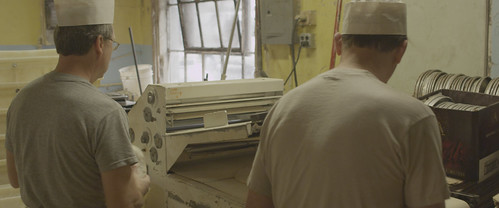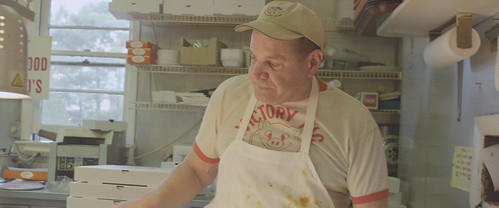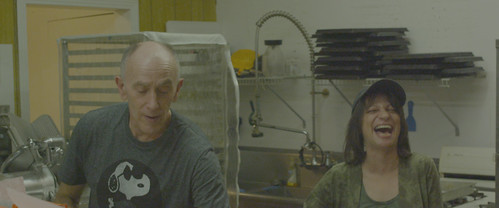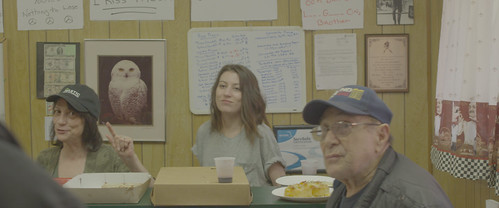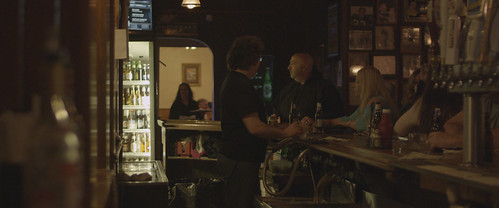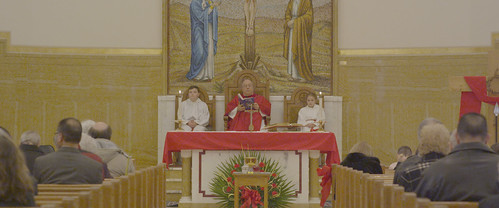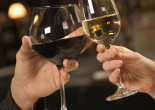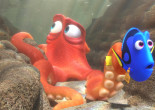EXCLUSIVE: An update on NEPA pizza documentary ‘Tray,’ with a new clip from Maroni’s in Scranton
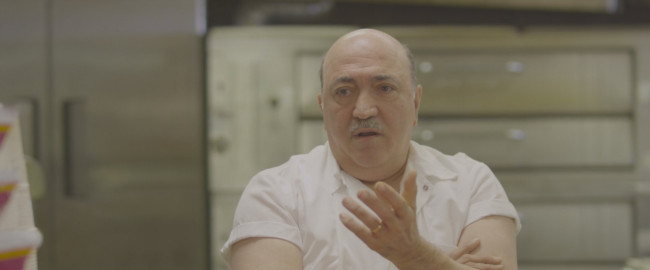
NEPA Scene was the first publication to tell you about “Tray,” a new documentary currently in production about pizza in Northeastern Pennsylvania and the region’s unique history and relationship with everyone’s favorite flatbread food. The story, which became one of the most popular articles we’ve ever published, was then picked up by many other media outlets across the state, boosting interest and the filmmakers’ online crowdfunding campaign and local pizza party fundraising events that helped cover some of the film’s costs. Scranton director Lindsay Barrasse soon joined on as a producer and cinematographer.
Five months later, we decided to check in with Scranton natives Jeremy Saltry and Joey Dominick, the now Philadelphia-based filmmakers behind “Tray: A Cut of Culture,” for an update on the production since principal photography wrapped. Before the interview, Saltry offered us new stills and an exclusive clip from the movie to premiere featuring Carm Pellegrino, a friendly face that many pizza lovers will recognize from Maroni’s Pizza House in West Scranton. (There’s also a previously released clip from an interview with Arcaro & Genell’s Restaurant co-owner Angelo Genell on Old Forge pizza history embedded below.)
“Carm is an amazing person. He gives everyone the same respect. Every time I walk in, I can feel the love. There is something special about Maroni’s – something you can’t put your finger on, something you can’t really use words to describe. It’s Maroni’s. There are no two like it,” Saltry said.
“I am fortunate that we had the opportunity to spend time with him and his customers. There are a few amazing moments we captured there that I can’t wait to show everyone. Soon!”
How soon? Well, we asked the 28-year-old director exactly that, along with many other impatient queries about how the highly anticipated documentary is coming together, the pressure of post-production, and what the experience of filming was like in pizza parlors throughout the area. Is there a such thing as too much pizza? We learned the answer to that one, too.
NEPA SCENE: When we talked back in February, you had just started shooting some rough footage. How long did you end up shooting for, and how did it go?
JEREMY SALTRY: We planned on filming for one month but ended up filming for two. Quite honestly, it was challenging. We essentially took several months worth of work and condensed it down to eight weeks. We were actually working 14-hour days for about two months straight; I think we took two days off in total. We also filmed on a Red Scarlet, a format that is very rarely used with documentaries. That definitely added an exciting challenge to the mix, working with a camera that usually has a large crew to support it, usually in a studio setting. I think I speak for everyone when I say that filming was incredibly fun, but we pushed ourselves to our limits and we all learned just what we are capable of doing when you’re dedicated and work hard. I think we all grew a lot.
NS: You seemed to have a good idea about what kind of story “Tray” would tell before you started shooting. Did that idea change or evolve as you were filming and conducting interviews?
JS: Absolutely. I almost feel like any documentary should be somewhat fluid during filming, keeping an open mind to tell a genuine story. “Tray” is and always will be about people. There are fundamental themes or ideas such as community, hard work, tradition, and generations that are the foundation of this documentary. Kelly Carr, our story editor who is brilliant in regards to journalism and storytelling, actually flew out from Phoenix to bring this story together with us. Without giving away too much, let’s just say that there were a lot more themes that were common with everyone we talked to that adds yet another layer to this story.
NS: You guys were bombarded with requests from local pizzerias and their patrons to shoot in so many different places. How did you end up choosing which ones to interview or feature in the documentary?
JS: This was one of the hardest parts. We needed to show where pizza started in our area. History. Old Forge was an obvious place to spend a lot of our time. From there, we needed to show how expansive or prolific pizza was and how it started to take on a life of its own outside of Old Forge over time, show the different “genres” of pizza. What we did was take a few places that we felt were a representation of certain regions. It was difficult because everyone was so excited and everyone wanted to help. It was hard to say no when everyone wanted to tell their story. We are still trying to figure out a way to have everyone included, as this is everyone’s story.
NS: What were some of your favorite days of filming?
JS: Honestly? Every day. Were there very long days? Absolutely. The longest and hardest days were usually the best while running off coffee, a little bit of sleep, and determination. You went to bed knowing you did everything you could and then got to wake up and do it again.
Each day was something different. Even if we were spending the next two to three days in a row with someone, each day you got to know someone more and more. I don’t think I have one favorite memory, as I have so many. Filming on Parade Day, hanging out in the coal mines, watching Joe hit his personal limit in regards to eating pizza – quite a lot. Most importantly, we had a chance to connect with our area and our neighbors.
NS: Were you surprised by all the media attention you received for this project or did you assume there would be this much interest?
JS: That kind of came as a surprise. We knew locally we might get some attention. We all knew getting into this before filming that the potential was there to have people take notice. After all, everyone loves pizza! I actually had to fly out a week or two early just to get a jump on all of the attention we had received.
What was really surprising was when people outside of NEPA started taking notice. People from New York City, Los Angeles, and the Midwest started to reach out. There was one person who also owned a creative agency in New York City and offered to send a crew down if we needed help. So many kind gestures and well wishes we received. It was really amazing pulling stats from a few different social media metrics and seeing organic growth literally day by day. That was what is truly inspiring to me about all of this – how many people cared.
NS: When you build that much hype, it’s great for the project, but it can also put a lot of pressure on you. Are you feeling that from people who are waiting for it to be finished, particularly after crowdfunding some of it?
JS: That’s actually something we are dealing with right now, the pressure to deliver what we promised. At one point, we actually got so much attention that we had to stop doing interviews. We had to circle the wagons so to speak and get our heads in the game. I feel bad because we were receiving so many messages that we had to focus on filming and couldn’t respond to them all.
The crowdfunding aspect is unique because everyone helped us make it. I still recieve 10-15 messages a week asking when it’s going to be done. I don’t think people realize how much hard work goes into the back end of filming in post. I just want everyone to know that we promise to make something great. I also want to say thank you to everyone. Truly, because of you, we were able to bring this project to life.
NS: What stage in the production are you in currently?
JS: Post-production. The hard work, as I like to say. It is certainly the most time-consuming aspect of this project. We still might be back to do some additional filming, something we are discussing as we go through and piece this together.
NS: Are you comfortable approximating when it may be finished, or is it difficult to say at this stage of the game?
JS: Hopefully six months to one year. So many people have reached out with excitement and enthusiasm wanting to see this. We are making sure that what we create is the best we can possibly create. Good things come with time.
NS: What is the toughest part of editing?
JS: The unique aspect, the challenging aspect of a documentary, is that there isn’t a beginning, middle, and end. With a narrative project, you have a story with actors, storyboards, and shot lists, so it’s much easier to edit a story together. With a documentary, you have raw footage. In our case, 50 hours or so. You have to review it sentence by sentence and then start to put a story together. Most footage that has been released has not been color corrected yet, just raw footage.
You also have to go through and adjust the audio as you are kind of running and gunning in the field, so you have to get your audio person to go in and work some magic. We also have to find someone to custom compose a soundtrack, amongst many other things. It’s a great deal of work, a labor of love.
NS: What’s the most fun part of it?
JS: The best part is sitting down with coffee and laughing while recalling the amazing moments we shared with people. It was such a mix of happy, sad, funny, and genuine. Most of the footage we didn’t have a chance to review ourselves until we sat down. That’s the amazing part, actually being able to sit down and see what we captured, appreciating the hard work that everyone put into this.
NS: What’s up next for the crew?
JS: As I said, we might be back soon to film a few other things in the area. Joe and I both wanted to film the Italian Festival and a few other community-based events. Other than that, just putting together a story. Then, hopefully, show the world!
NS: You guys received a lot of free pizza while shooting. Have you eaten much pizza since you wrapped filming?
JS: I actually gained 20 pounds or so during filming! I certainly had to scale back the pizza but, come on now, it’s pizza! A few weeks and I was right back on that horse.
NS: What have you learned from this experience so far?
JS: While I am fortunate that we had an amazing crew and some great resources available to us, it didn’t necessarily start out that way. By bringing people together who were passionate and dedicated to their craft came the resources to make this possible.
It doesn’t take much to pick up a camera, to pick up a pen and paper. It doesn’t cost anything to listen to your friend, your family, or the old lady who lives down the street who sits on her front porch. Everyone has a story. Everyone has a unique perspective of this world. We all need to work together in the pursuit of creativity and expression.
What I learned is do something because you can, because you want to show people what you see around you. Take photos, paint, draw, write. Tell stories. Most importantly, listen. Be passionate about it. Show everyone else your perspective and someone will appreciate it.
by Rich Howells
Rich is an award-winning journalist, longtime blogger, photographer, and podcast host. He is the founder and editor of NEPA Scene.


